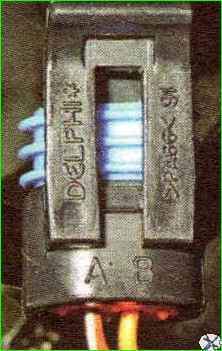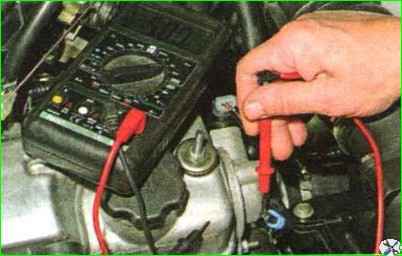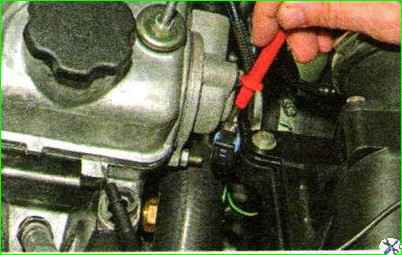With the ignition off, disconnect the engine management system wiring harness block from the coolant temperature sensor

The terminals of the block “A” and “B” are marked on its body.

Connecting the tester probes to terminal “B” of the block and to the “ground” of the engine,
with the ignition on, measure the voltage of the sensor input signal circuit.
The device should detect a voltage of 4.8-5.2 V.
If the voltage does not match, check the serviceability of the circuit (open and short to ground)
between terminal “B” of the wiring harness block and terminal “39” of the controller.
If the circuit is OK, the controller is faulty.

By connecting the tester probes to terminal “A” of the block and to the “ground” of the engine, we measure the resistance.
Sensor resistance values at different coolant temperatures
Coolant temperature, ° C = Resistance Ohm
- 100=180
- 90=240
- 80=330
- 70=470
- 60=670
- 50=970
- 45=1200
- 40=1460
- 35=1800
- 30=2240
- 25=2800
- 20=3520
- 15=4450
- 10=5670
- 0=9420
If the sensor grounding circuit is working properly, the device should register a resistance of less than 1 ohm.
The cause of increased resistance may be an unreliable connection in the pads connected to the sensor or controller.
To check the sensor, disconnect the engine control system wiring harness block from it.
Using a tester, we measure the resistance of the sensor for two values of coolant temperature - an unheated and a warm engine. We compare the obtained values with the control ones.
If the measured resistance values do not match the control values, the sensor must be replaced.





